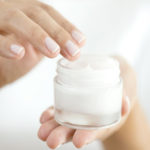Ground beef is a widely used ingredient in various everyday dishes. Many households opt to purchase ground beef for its convenience and long shelf life. However, properly thawing ground beef can pose difficulties and negatively impact the taste of the meat.
In order to assist you in resolving this issue, we are pleased to provide a comprehensive guide on the proper and secure methods for thawing ground beef. Please peruse the information below!
Reversing the Freeze: Refrigerator Thawing Out
In order to safely thaw ground beef, the refrigerator method is recommended. This approach maintains a consistent and cool temperature, effectively reducing the risk of bacterial contamination and promoting safe conditions. To thaw ground beef using this method, simply place the meat in a bowl or plastic tray and allow it to thaw in the refrigerator for one day prior to cooking.
To maintain a high standard of food quality and prevent spoilage, it is advisable to consume any unused thawed ground beef within 48 hours. Should you choose not to use it, freezing the meat again is an option.
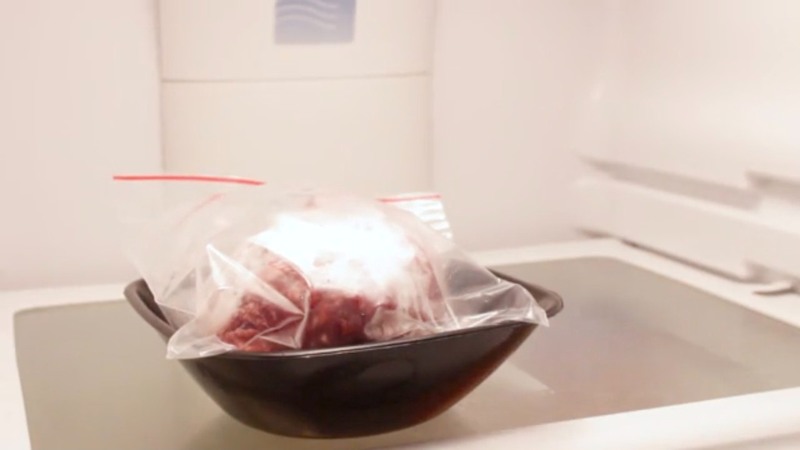 Thaw in the refrigerator
Thaw in the refrigerator
Thawing Frozen Meat with Cold Water for Faster, Safer Cooking Times
To properly thaw ground beef and maintain its quality, it is recommended to plan ahead and allow at least one hour for thawing before use. Additionally, the necessary thawing time should be estimated based on the size and thickness of the meat package. As a general guideline, each 450g of beef will require approximately 60 minutes to thaw.
To properly thaw ground beef, it is recommended to place the meat in a securely sealed, airtight bag before submerging it in cold water. It is important to ensure that the bag remains fully submerged, while avoiding any direct contact between the meat and water. This precaution is necessary to prevent the meat from becoming waterlogged, as excess moisture can lead to a decreased quality and texture. By following these guidelines, you can minimize the risk of bacterial infiltration, thus preserving the desired texture and overall quality of the ground beef.
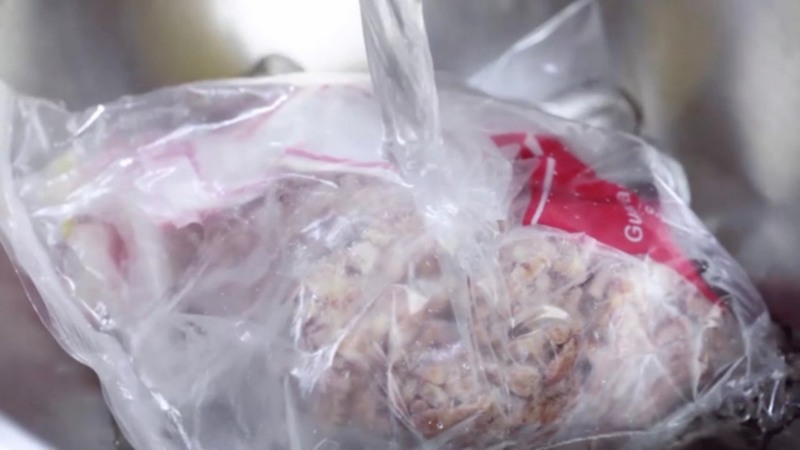 Thaw with cold water
Thaw with cold water
In order to ensure proper thawing of beef, it is important to change the cold water every 30 minutes. This practice is necessary to prevent the buildup of bacteria in the water. It is crucial to use only cold water, as warm water can foster bacterial growth.
When thawing ground beef, it is recommended to use it within a period of 2 hours. Refreezing ground beef that has been thawed with cold water should be avoided as it can lead to the growth of bacteria and pose health risks. If there are leftovers from the thawed meat, it is advisable to cook or prepare them into dishes before freezing as a precautionary measure.
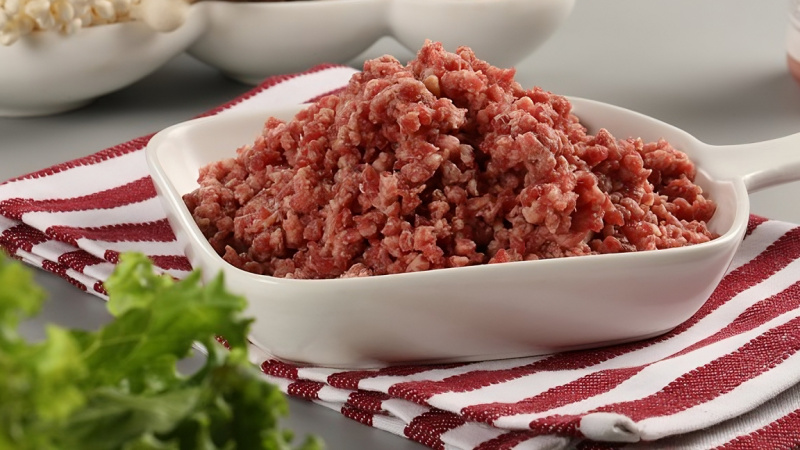 After thawing ground beef, you should use it within 2 hours
After thawing ground beef, you should use it within 2 hours
Thawing with a Microwave
Thawing ground beef using a microwave offers a fast and convenient approach. To do so, simply remove the ground beef from the refrigerator and place it in a microwave-safe bowl or plate. Then, switch on the microwave and patiently wait until the thawing process is fully accomplished. The duration of thawing may differ based on the weight of the meat portion.
To properly thaw ground beef, it is recommended to use the microwave on medium power for approximately 3 minutes per 450g of ground beef. If the beef is still not completely thawed after this time, you can continue microwaving with shorter time intervals, typically 1 – 2 minutes.
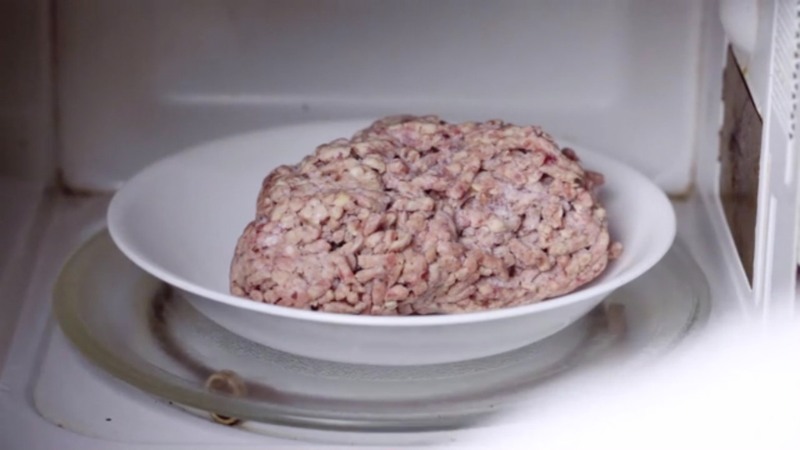 Thaw with microwave
Thaw with microwave
Please find below our expert tips for thawing ground beef safely and ensuring a delicious end result. We trust that this article will provide you with valuable insights. Thank you for your continued support and readership!
Is Refrigerated Leftovers Linked to an Increased Risk of Cancer?
Dr. Lam Van Man, Head of Research, Development and Technology Transfer Department of the Institute of Safety Food, has warned of the risk of food poisoning when reheating leftovers from the refrigerator. But what should we be aware of when it comes to the possibility of these leftovers causing cancer? Here, we explore what the experts have to say on the matter and offer some tips for safe eating.

























